Predicting Potential Distribution and Evaluating Suitable Soil Condition of Oil Tea Camellia in China
Abstract
1. Introduction
2. Materials and Methods
2.1. Databases
2.2. Modeling Procedure
2.3. Statistical Analysis
3. Result
3.1. Predicted Potential Geographical Distribution of C. Oleifera
3.2. Suitable Soil Conditions of Oil Tea Camellia
4. Discussion
4.1. Comparison of the Potential Distribution and Previous Prediction
4.2. Difference Between the Potential Distribution and the Actual Planting Area
4.3. Supplement and Evaluation of Missing Data
5. Conclusions
Author Contributions
Funding
Acknowledgments
Conflicts of Interest
References
- Chen, Y.Z.; Wang, B.M.; Chen, J.J.; Wang, X.N.; Wang, R.; Peng, S.F.; Chen, L.S.; Ma, L.; Luo, J. Identification of Rubisco rbcL and rbcS in Camellia oleifera and their potential as molecular markers for selection of high tea oil cultivars. Front. Plant. Sci. 2015, 6, 189. [Google Scholar] [CrossRef] [PubMed]
- Dong, B.; Wu, B.; Hong, W.H.; Li, X.P.; Li, Z.; Xue, L.; Huang, Y.F. Transcriptome analysis of the tea oil Camellia (Camellia oleifera) reveals candidate drought stress genes. PLoS ONE 2017, 12, e0181835. [Google Scholar] [CrossRef] [PubMed]
- Ma, J.L.; Ye, H.; Rui, Y.K.; Chen, G.C.; Zhang, N.Y. Fatty acid composition of Camellia oleifera, oil. J. Verbrauch. Lebensm. 2011, 6, 9–12. [Google Scholar] [CrossRef]
- Xia, E.H.; Jiang, J.J.; Huang, H.; Zhang, L.P.; Zhang, H.B.; Gao, L.Z. Transcriptome analysis of the oil-rich tea plant, Camellia oleifera, reveals candidate genes related to lipid metabolism. PLoS ONE 2014, 9, e104150. [Google Scholar] [CrossRef] [PubMed]
- Lee, C.P.; Yen, G.C. Antioxidant activity and bioactive compounds of tea seed (Camellia oleifera Abel.) oil. J. Agric. Food Chem. 2006, 54, 779–784. [Google Scholar] [CrossRef] [PubMed]
- Cheng, Y.T.; Wu, S.L.; Ho, C.Y.; Huang, S.M.; Cheng, C.L.; Yen, G.C. Beneficial effects of camellia oil (Camellia oleifera Abel.) on ketoprofen-induced gastrointestinal mucosal damage through upregulation of HO-1 and VEGF. J. Agric. Food Chem. 2014, 62, 642–650. [Google Scholar] [CrossRef] [PubMed]
- Ye, Y.; Xing, H.T.; Li, Y. Nanoencapsulation of the sasanquasaponin from Camellia oleifera, its photo responsiveness and neuroprotective effects. Int. J. Nanomed. 2014, 9, 4475–4484. [Google Scholar] [CrossRef] [PubMed]
- Zhang, X.F.; Yang, S.L.; Han, Y.Y.; Zhao, L.; Lu, G.L.; Xia, T.; Gao, L.P. Qualitative and quantitative analysis of triterpene saponins from tea seed pomace (Camellia oleifera Abel.) and their activities against bacteria and fungi. Molecules 2014, 19, 7568–7580. [Google Scholar] [CrossRef] [PubMed]
- Hu, J.J.; Wu, W.; Cao, Z.H.; Shu, Q.L.; Fu, S.L. Morphological, physiological and biochemical responses of Camellia oleifera to low-temperature stress. Pak. J. Bot. 2016, 48, 899–905. [Google Scholar]
- Cui, X.Y.; Wang, W.J.; Yang, X.Q.; Li, X.; Qin, S.Y. Potential distribution of wild Camellia oleifera based on ecological niche modeling. Biodivers. Sci. 2016, 24, 1117–1128. (In Chinese) [Google Scholar] [CrossRef]
- Chen, Y.Z. Oil Tea Camellia Superior Germplasm Resources; China Forestry Publishing House: Beijing, China, 2008; pp. 14–15. (In Chinese) [Google Scholar]
- Liu, J.; Wu, L.C.; Chen, D.; Li, M.; Wei, C.J. Soil quality assessment of different Camellia oleifera, stands in mid-subtropical China. Appl. Soil Ecol. 2017, 113, 29–35. [Google Scholar] [CrossRef]
- Clever, J. China: Oilseeds and Products Annual. United States Department of Agriculture Foreign Agriculture Service. Available online: https://www.fas.usda.gov/data/china-oilseeds-and-products-annual-1 (accessed on 1 June 2018).
- Elith, J.; Graham, C.H.; Anderson, R.P.; Dudik, M.; Ferrier, S.; Guisan, A.; Hijmans, R.J.; Huettmann, F.; Leathwick, J.R.; Lehmann, A.; et al. Novel methods improve prediction of species’ distributions from occurrence data. Ecography 2006, 29, 129–151. [Google Scholar] [CrossRef]
- Pearson, R.G.; Raxworthy, C.J.; Nakamura, M.; Peterson, A.T. Original article: Predicting species distributions from small numbers of occurrence records: A test case using cryptic geckos in Madagascar. J. Biogeogr. 2007, 34, 102–117. [Google Scholar] [CrossRef]
- Hernandez, P.A.; Franke, I.; Herzog, S.K.; Pacheco, V.; Paniagua, L.; Quintana, H.L.; Soto, A.; Swenson, J.J.; Tovar, C.; Valqui, T.H.; et al. Predicting species distributions in poorly-studied landscapes. Biodivers. Conserv. 2008, 17, 1353–1366. [Google Scholar] [CrossRef]
- Townsend Peterson, A.; Papeş, M.; Eaton, M. Transferability and model evaluation in ecological niche modeling: A comparison of GARP and Maxent. Ecography 2017, 30, 550–560. [Google Scholar] [CrossRef]
- Remya, K.; Ramachandran, A.; Jayakumar, S. Predicting the current and future suitable habitat distribution of Myristica dactyloides Gaertn. using MaxEnt model in the Eastern Ghats, India. Ecol Eng. 2015, 82, 184–188. [Google Scholar] [CrossRef]
- Wang, Y.S.; Xie, B.Y.; Wan, F.H.; Xiao, Q.M.; Dai, L.Y. The potential geographic distribution of Radopholus similis in China. Agric. Sci. China 2007, 6, 1444–1449. [Google Scholar] [CrossRef]
- Liu, J.; Wu, L.C.; Chen, D.; Yu, Z.G.; Wei, C.J. Development of a soil quality index for Camellia oleifera forestland yield under three different parent materials in Southern China. Soil Till. Res. 2018, 176, 45–50. [Google Scholar] [CrossRef]
- Andrews, S.S.; Karlen, D.L.; Mitchell, J.P. A comparison of soil quality indexing methods for vegetable production systems in Northern California. Agric. Ecosyst. Environ. 2002, 90, 25–45. [Google Scholar] [CrossRef]
- Ngo-Mbogba, M.; Yemefack, M.; Nyeck, B. Assessing soil quality under different land cover types within shifting agriculture in South Cameroon. Soil Till. Res. 2015, 150, 124–131. [Google Scholar] [CrossRef]
- Imaz, M.J.; Virto, I.; Bescansa, P.; Enrique, A.; Fernandez-Ugalde, O.; Karlen, D.L. Soil quality indicator response to tillage and residue management on semi-arid mediterranean cropland. Soil Till. Res. 2010, 107, 17–25. [Google Scholar] [CrossRef]
- Nortcliff, S. Standardisation of soil quality attributes. Agric. Ecosyst. Environ. 2002, 88, 161–168. [Google Scholar] [CrossRef]
- Babar, S.; Amarnath, G.; Reddy, C.S.; Jentsch, A.; Sudhakar, S. Species distribution models: ecological explanation and prediction of an endemic and endangered plant species (Pterocarpus santalinus L.f.). Curr. Sci. 2012, 102, 1157–1165. [Google Scholar]
- Zhu, G.P.; Liu, Q.A.; Gao, Y.B. Improving ecological niche model transferability to predict the potential distribution of invasive exotic species. Biodivers. Sci. 2014, 22, 223–230. [Google Scholar]
- Zhuang, R.L. Oil-tea Camellia in China, 2nd ed.; China Forestry Publishing House: Beijing, China, 2012; pp. 42–78. (In Chinese) [Google Scholar]
- Hu, X.; Wu, F.C.; Guo, W.; Liu, N. Identification of potential cultivation region for Santalum album in China by the MaxEnt ecologic niche model. Sci. Silvae Sinicae 2014, 50, 27–33. (In Chinese) [Google Scholar]
- Yin, X.J.; Zhou, G.S.; Sui, X.H.; He, Q.J.; Li, R.P. Potential geographical distribution of Quercus wutaishanica forest and its dominant factors. Sci. Silvae Sinicae 2013, 49, 10–14. (In Chinese) [Google Scholar]
- State Forestry Bureau. The Planning of National Camellia oleifera Industry Development. 2009. Available online: http://wenku.baidu.com/view/a386ccc10c22590102029d8d.html (accessed on 2 July 2018).
- Zheng, D.J.; Pan, X.Z.; Zhang, D.M.; Xie, L.S.; Zeng, J.H.; Zhang, Z.L.; Ye, H. Survey and analysis on tea-oil Camellia resource in Hainan. J. Northwest For. Univ. 2016, 1, 130–135. (In Chinese) [Google Scholar]
- Fang, J.P. A Study of Structure and Functions in a Primary Picea likiangensis var. linzhiensis Forest Ecosystem in Tibet. Ph.D. Thesis, Central South University of Forestry and Technology, Changsha, China, 2010. (In Chinese). [Google Scholar]
- Sessa, J.; Syed, D. Techniques to deal with missing data. In Proceedings of the International Conference on Electronic Devices, Systems and Applications, Busan, Korea, 8 December 2016. [Google Scholar]
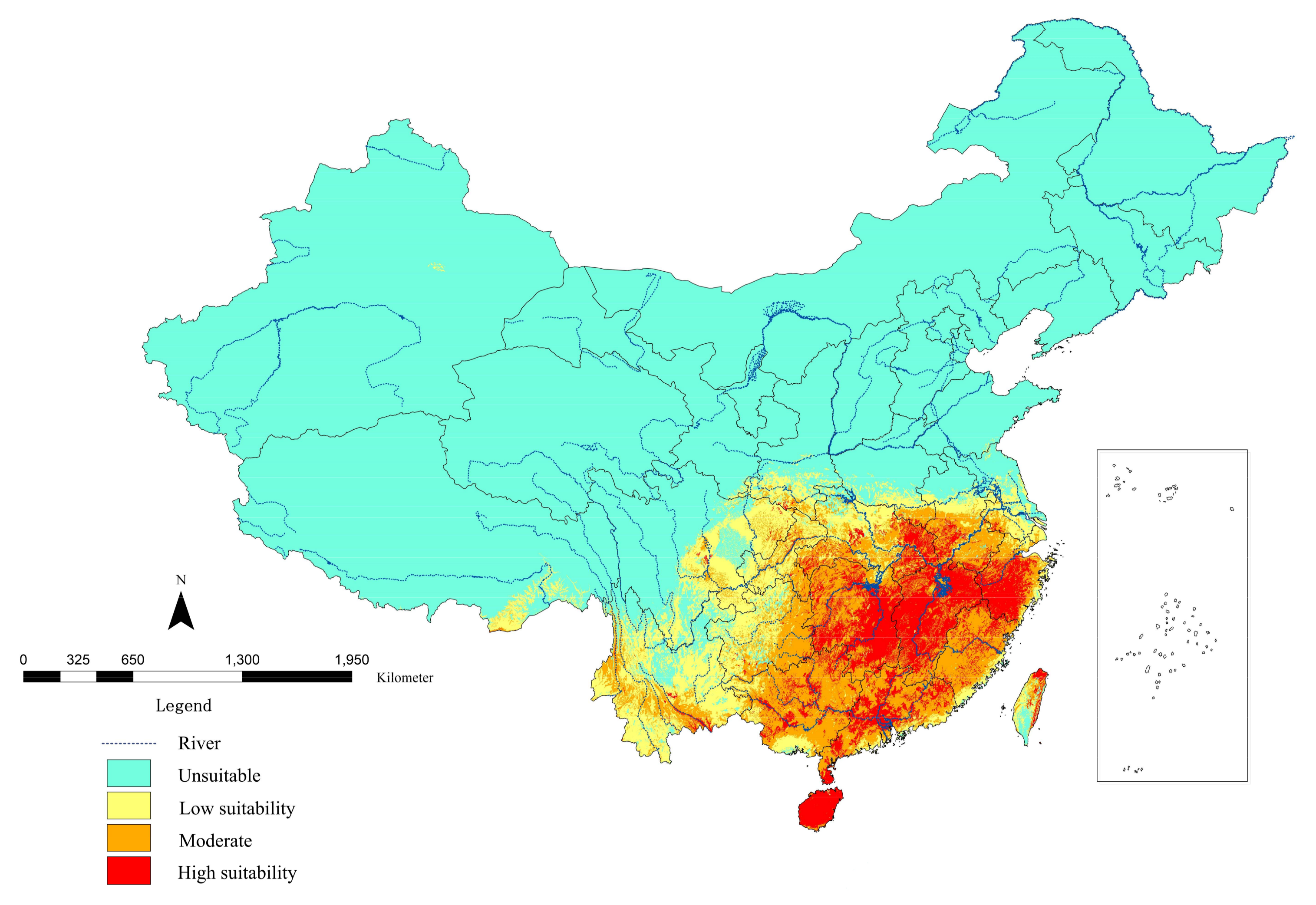
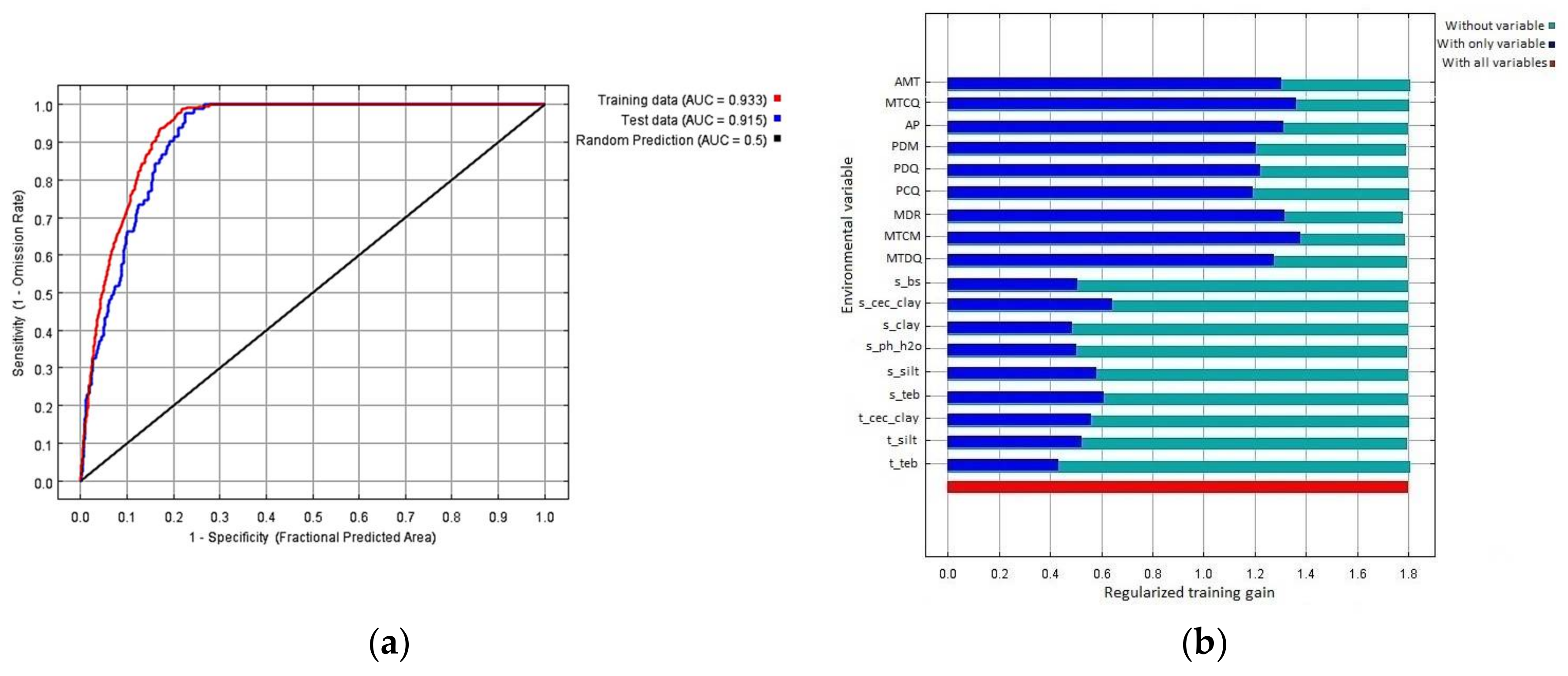
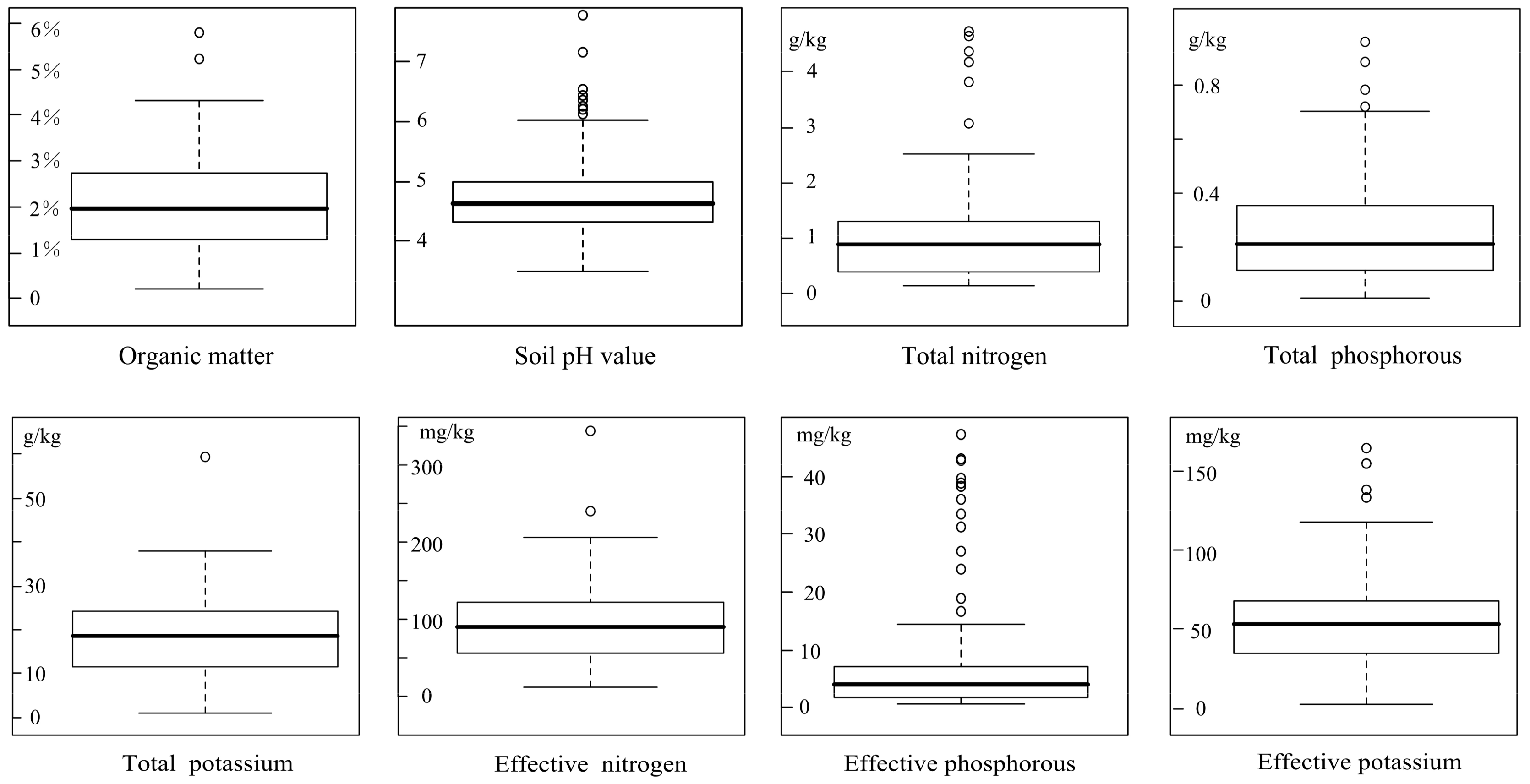
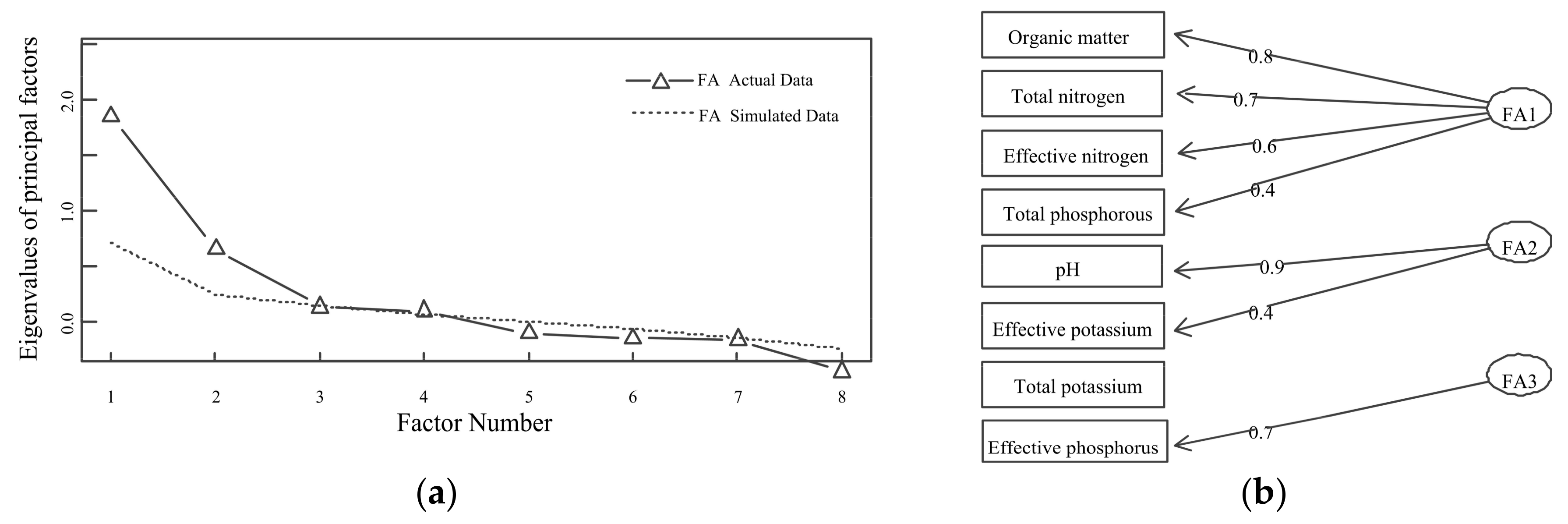
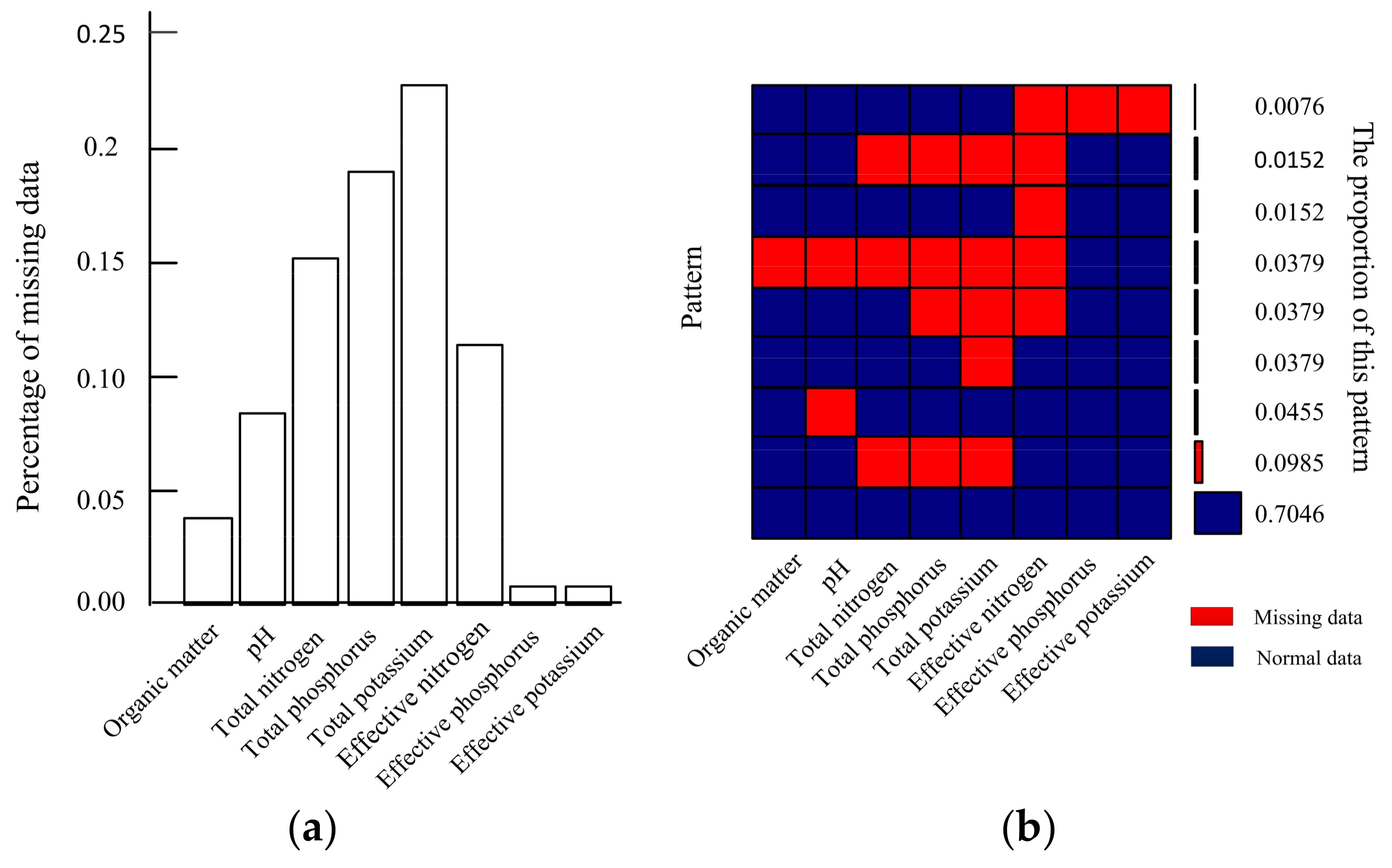
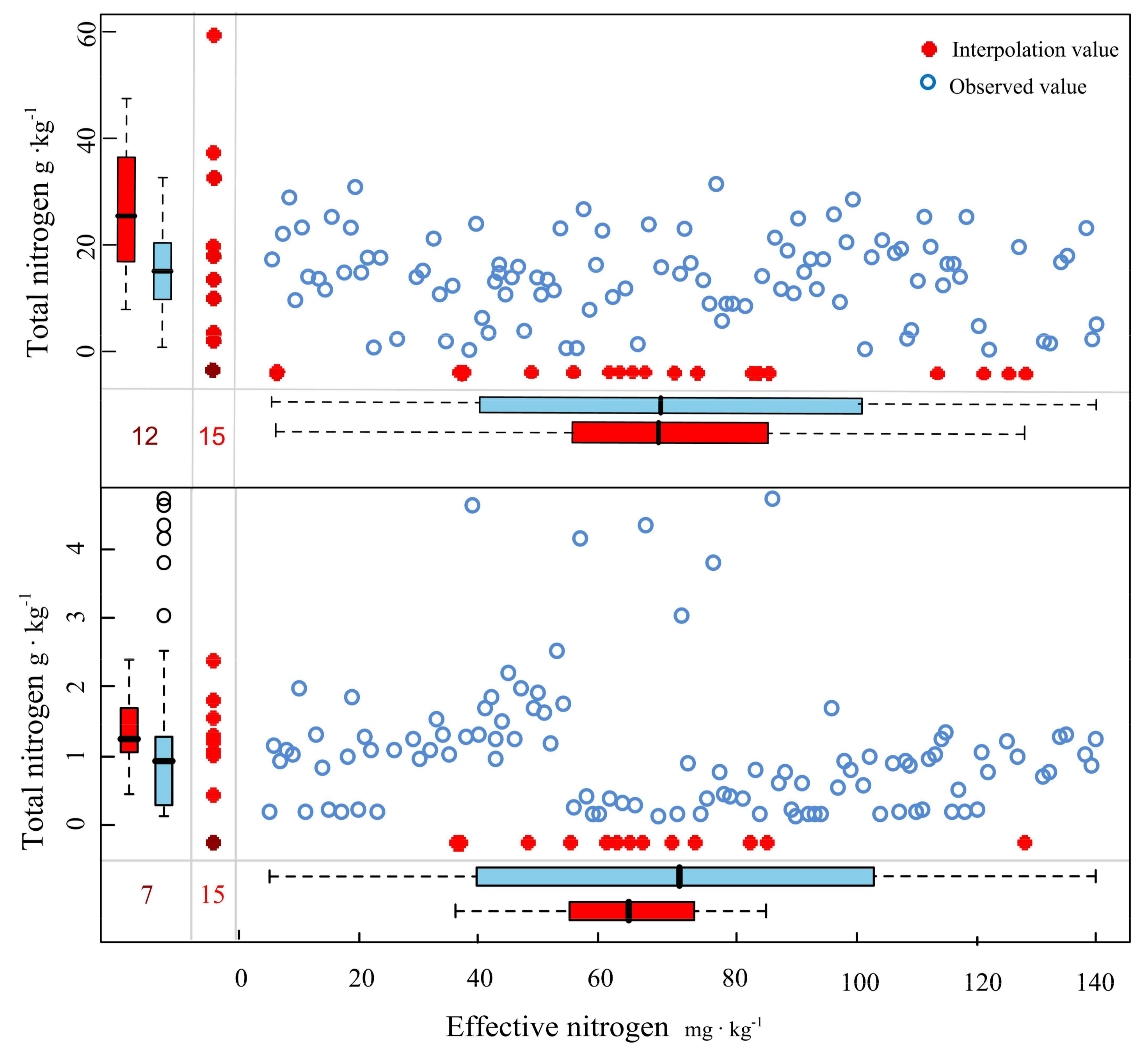
| Field | Description | Field | Description |
|---|---|---|---|
| AMT | Annual Mean Temperature | MTCQ | Mean Temperature of Coldest Quarter |
| MDR | Mean Diurnal Range | AP | Annual Precipitation |
| ISO | Isothermality | PWM | Precipitation of Wettest Month |
| TS | Temperature Seasonality | PDM | Precipitation of Driest Month |
| MTWM | Max Temperature of Warmest Month | PS | Precipitation Seasonality |
| MTCM | Min Temperature of Coldest Month | PWQ | Precipitation of Wettest Quarter |
| TAR | Temperature Annual Range | PDQ | Precipitation of Driest Quarter |
| MTWQ | Mean Temperature of Wettest Quarter | PWAQ | Precipitation of Warmest Quarter |
| MTDQ | Mean Temperature of Driest Quarter | PCQ | Precipitation of Coldest Quarter |
| MTWAQ | Mean Temperature of Warmest Quarter |
| Field | Description | Field | Description |
|---|---|---|---|
| issoil | Soil or non-soil unit | t-caco3 | Topsoil Calcium Carbonate |
| sharp | Share in Soil Mapping Unit | t-caso4 | Topsoil Gypsum |
| ref-depth | Reference Soil Depth | t-esp | Topsoil Sodicity (ESP) |
| drainage | Drainage class | t-ece | Topsoil Salinity (Elco) |
| awc-class | AWC Range | s-gravel | Subsoil Gravel Content |
| seq | Sequence | s-sand | Subsoil Sand Fraction |
| phase1 | PHASE1 | s-silt | Subsoil Silt Fraction |
| phase2 | PHASE2 | s-clay | Subsoil Clay Fraction |
| add-prop | Other properties (gelic, vertic, petric) | s-oc | Subsoil Organic Carbon |
| t-gravel | Topsoil Gravel Content | s-ph-h2o | Subsoil pH (H2O) |
| t-sand | Topsoil Sand Fraction | s-cec-clay | Subsoil CEC (clay) |
| t-silt | Topsoil Silt Fraction | s-cec-soil | Subsoil CEC (soil) |
| t-clay | Topsoil Clay Fraction | s-bs | Subsoil Base Saturation |
| t-oc | Topsoil Organic Carbon | s-teb | Subsoil TEB |
| t-ph-h2o | Topsoil pH (H2O) | s-caco3 | Subsoil Calcium Carbonate |
| t-cec-clay | Topsoil CEC (clay) | s-caso4 | Subsoil Gypsum |
| t-cec-soil | Topsoil CEC (soil) | s-esp | Subsoil Sodicity (ESP) |
| t-bs | Topsoil Base Saturation | s-ece | Subsoil Salinity (Elco) |
| t-teb | Topsoil TEB |
© 2018 by the authors. Licensee MDPI, Basel, Switzerland. This article is an open access article distributed under the terms and conditions of the Creative Commons Attribution (CC BY) license (http://creativecommons.org/licenses/by/4.0/).
Share and Cite
Liu, C.; Chen, L.; Tang, W.; Peng, S.; Li, M.; Deng, N.; Chen, Y. Predicting Potential Distribution and Evaluating Suitable Soil Condition of Oil Tea Camellia in China. Forests 2018, 9, 487. https://doi.org/10.3390/f9080487
Liu C, Chen L, Tang W, Peng S, Li M, Deng N, Chen Y. Predicting Potential Distribution and Evaluating Suitable Soil Condition of Oil Tea Camellia in China. Forests. 2018; 9(8):487. https://doi.org/10.3390/f9080487
Chicago/Turabian StyleLiu, Caixia, Longsheng Chen, Wei Tang, Shaofeng Peng, Meiqun Li, Nan Deng, and Yongzhong Chen. 2018. "Predicting Potential Distribution and Evaluating Suitable Soil Condition of Oil Tea Camellia in China" Forests 9, no. 8: 487. https://doi.org/10.3390/f9080487
APA StyleLiu, C., Chen, L., Tang, W., Peng, S., Li, M., Deng, N., & Chen, Y. (2018). Predicting Potential Distribution and Evaluating Suitable Soil Condition of Oil Tea Camellia in China. Forests, 9(8), 487. https://doi.org/10.3390/f9080487





